Search Posts
Recent Posts
- Vinny Paz to be inducted TODAY into the International Boxing Hall of Fame – CES Boxing June 7, 2025
- In the News… quick recap of the week’s news (6.7.25) June 7, 2025
- Burn with Kearns: Strong without the spend: How scraps became strength tools – Kevin Kearns June 7, 2025
- Rhode Island Weather for June 7, 2025 – Jack Donnelly June 7, 2025
- How to advocate for threatened properties: The Heritage Alliance of Pawtucket June 7, 2025
Categories
Subscribe!
Thanks for subscribing! Please check your email for further instructions.
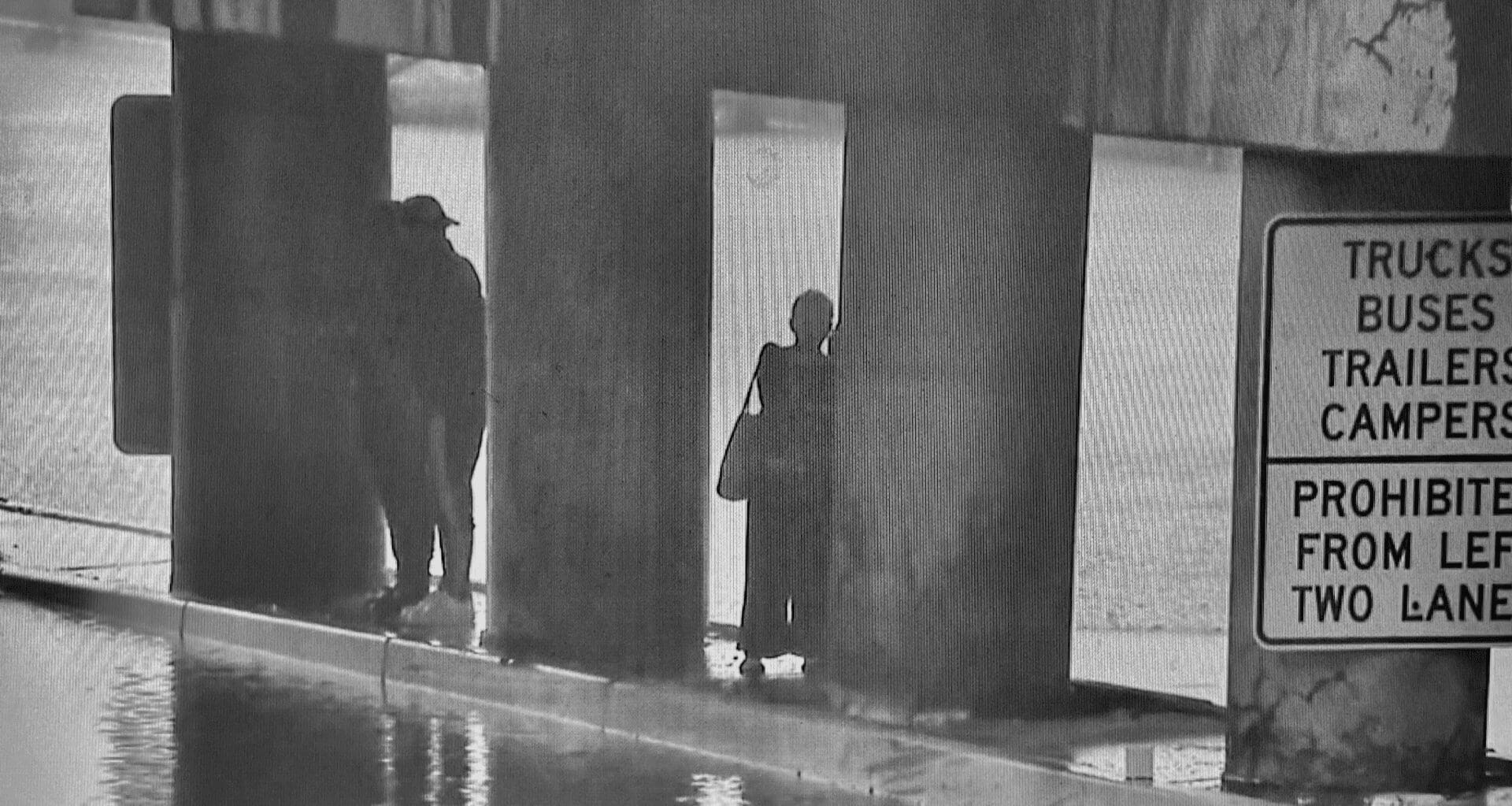
Preparedness fail. Back to Basics for Rhode Island infrastructure overriding priority.
Photo, top: Corey Welch, WPRI, on Twitter
An intense, driven rain hit the parched Rhode Island surfaces with a refreshing and welcome drink – then it became a deluge – then it just wouldn’t stop. Early this morning, the rain continues to pummel. On top of 5, 7, 9 inches already hitting us. And, our local roads and bridges, basements, roofs, and entire infrastructure is strained to the point of many failures. Municipal workers are rushing to clear drains, open roads, redirect mounds of rushing water.
We’re not done with this yet. Flood warnings are beginning to be issued again in early morning Tuesday.
Two weeks ago, NBC10s Patrice Wood did a live Facebook broadcast stuck on Route 95 – right at the area we saw last night on NBC Nightly News – flooded, water going nowhere fast, unbelieving cars nearly floating, others stacked up like race cars waiting for “go”. That might have been a warning. The rain that day wasn’t all that bad. But what was up with the highway and why did it cave at that first flooding test? What did RIDOT do after that? Asking that question may be key to finding out just what happened to such a major highway.
When you have 95 North and South, Route 10, Route 6 all impacted, you have brought metropolitan Providence at a standstill.
Atwells Avenue had a cave-in of the 700 block – where Brett Smiley did an impromptu interview on Twitter, claiming that “patches and work were incorrectly done” causing all the damage. It gave a hint to what many have said is a too-low key, mild-mannered candidate would do in a city with extreme situations such as shootings, stabbings, fires – and infrastructure fails. Some would call it gumption. As candidates go, he showed he had it, and he knew what he was talking about. It wasn’t just an angry burst of “we need to do better”.
Other politicos took their cue to issue statements, mostly blaming the Governor. Few blamed the sitting Mayor of Providence. A steady raising of blame will come over the days – blame for dirty roads, potholes unfilled, infrastructure repairs and maintenance overlooked for the shiny ball of bike lanes and painted red bus-only lanes.
We didn’t see hundreds of bikes stranded in water, unable to get around, or get home. We saw hundreds of cars stuck and people standing by the side of the road, literally afraid that if things got really bad, they might even drown.
Thank goodness this didn’t happen on a first day of school – today – for many. Or with buses on the road. One shudders to think what disaster that would have been. But it’s only another late afternoon storm away.
Climate change is real, no doubt about that. And in the short term we can’t do anything about it. Roads and bridges challenged were built in the 50s and 60s – they aren’t wide enough, they’ve been patched up in times of economic challenge. But what are we going to do – today – to address where we are – not where we’ve been – or where we are going with all our plans for the future on emissions and traffic calming – and bike lanes.
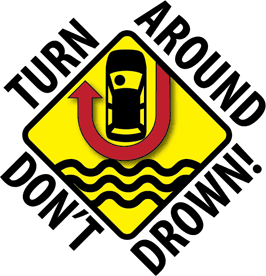
RIDOT says the drains were not clogged – they were just not able to keep up with the amount of water. OK. But why were we watching crews on Twitter “clearing the drains”? Garbage, construction debris, basic mess not street-sweeped. All added to the problem.
RIDOT director Peter Alviti – said the cost of updating the drains “would be astronomical”. We need to know more about that statement.
A building literally fell down in Providence. It was a storage facility, but how many old-old brick buildings like this, especially with flat roofs (think snow accumulation) have been inspected for safety. One person was in the building and got out just in time as he heard cracking and rushing water. A brick building has to be in pretty bad shape to simply fall down in a bad rainstorm.
A brand new football stadium in North Providence is under water.
Brown University had some dorms flood, pushing newly moved-in students out. Students sleeping in 5th floor lounges.
A rescue on Pleasant Valley Parkway by neighbors as a car literally capsized into a flooded area.
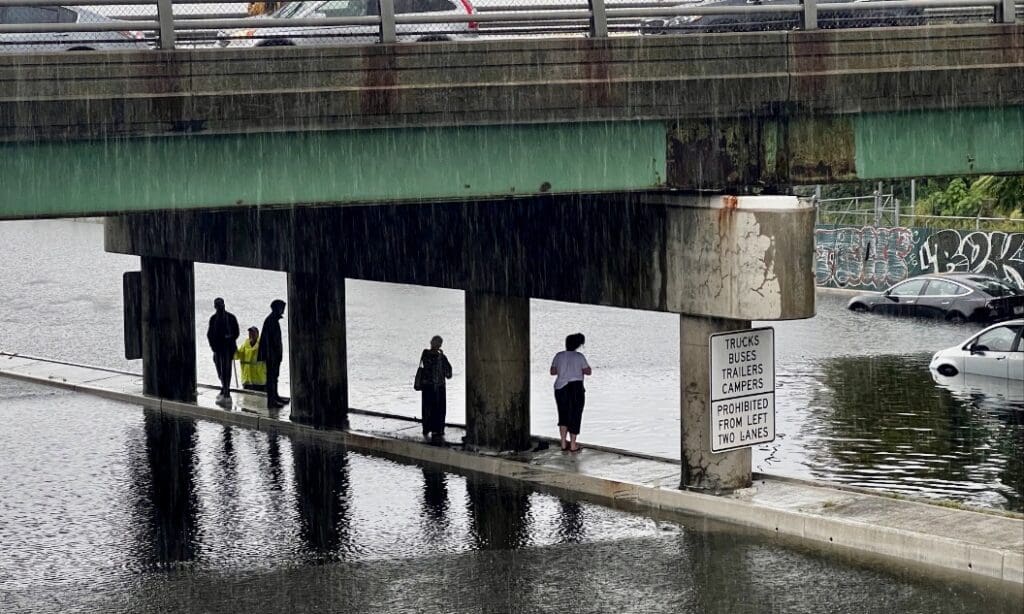
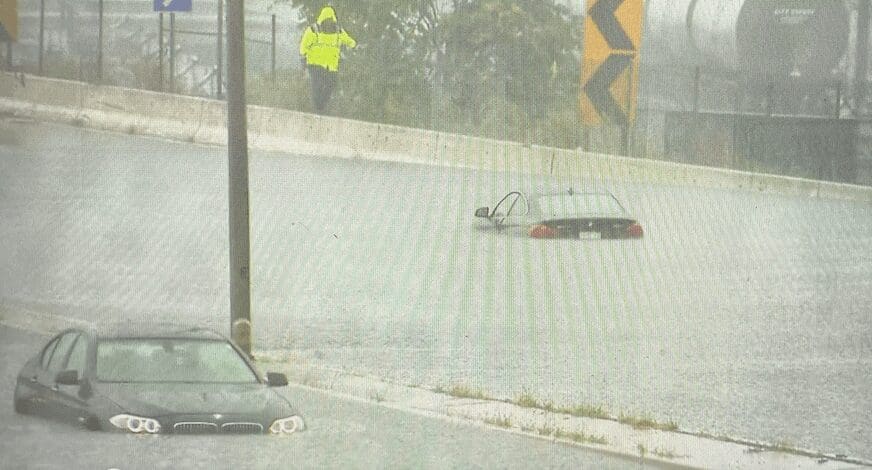
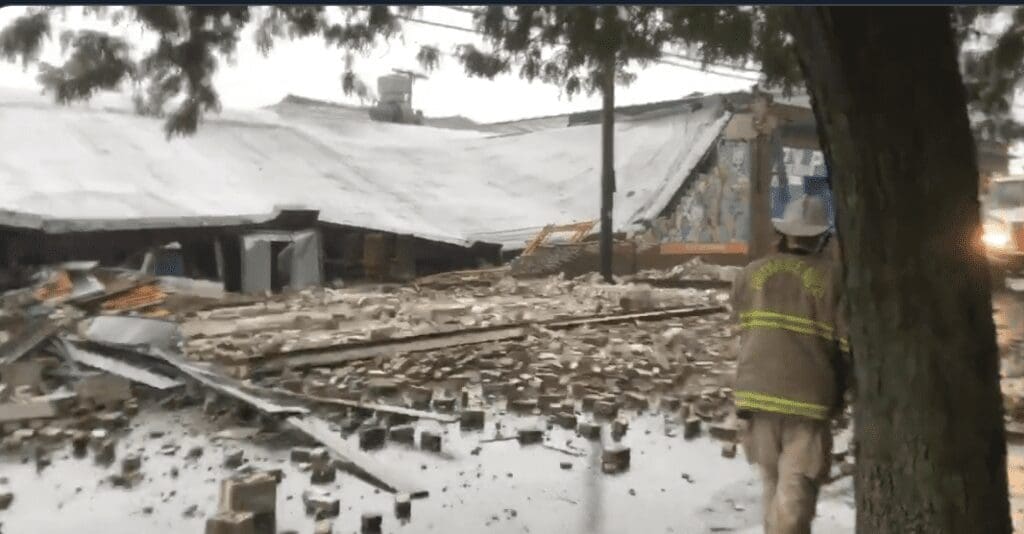
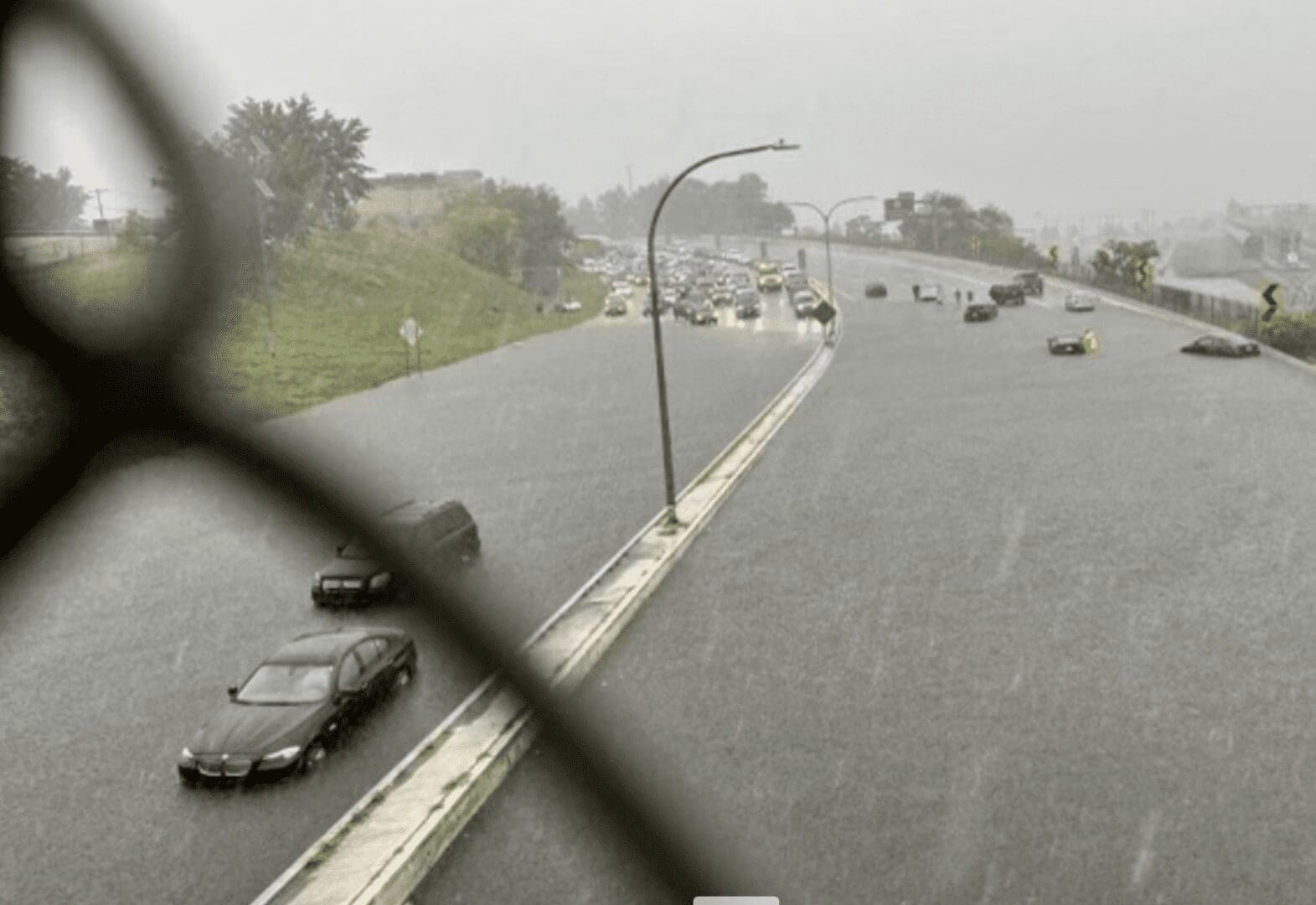
What do we do now? Suggestion: City and towns – the state – all need to do an infrastructure Audit. The experts need to get to work and assess. Invite the public to submit their issues in their neighborhoods – they know the worst that need to be done first. What are the states of our main roads and our problem side roads. What needs to be done to repair them. Then price it out. Then prioritize projects. Put the bike lanes on hold. Put the lane painting on hold. Find the funds. Fix the roads. Fix the bridges. Patch the potholes. Deal with the drains. Sweep the streets.
Prepare for the winter. Snowstorms and ice. Pick up the traffic humps that are portable, soon, so plowing can take place.
When it’s almost spring, look up. Trim the trees – just driving around will show how many trees are intertwined with electrical wires. A hurricane, a bad wind, – just like our rainstorm yesterday – a crisis is waiting around the corner.
September is National Preparedness Month. It’s September 6th, and we failed to prepare. The theme is “putting people first and reaching communities where they are.” The campaign addresses the Latino communities in America, as a priority. Here is a link to their information on floods: https://www.ready.gov/floods.
Our marching orders – as state and municipal government – are right in front of us. Failure to do so is failing our people. Our seniors, our working families, our children – failing to prepare is failing to care. We must care – enough – to do the work – and to do it now.
As for each of us, we need to do our own homework – look at where we live – our gutters, our drains, yards, roofs, basements – our communication methods we have with each other. How will we get the news at a moment’s notice? Our “go kits” with emergency supplies. Emergency items in our cars. Call your city and town when you see dangerous infrastructure. It’ll take a village.
As you go to the ballot box, or mail in your votes, think Back to Basics. Because without the basics, nothing really can be built to address the future.
___

very good article highlighting real problems , challenges and a call to action!